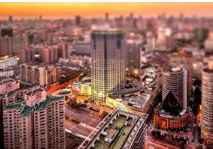- 阅读
- 阅读
- 技巧
- 百科
- 试题
- 文化
- 技能
Home Truths
令人不快的住房真相
South Korea’s housing crunch offers a warning for other countries.
韩国楼市困境为其他国家提供前车之鉴。
"Buying the house in 2021 might be one of the biggest regrets of my life,” says Kim Myung-soo, a 33-year-old whose home in Jamsil, eastern Seoul, has fallen in value by about $400,000.
“在2021年买房可能是我这辈子最后悔的事了。”33岁的金明洙说,他位于首尔东部蚕室区的房子已经贬值了大约40万美元。

There are other sources of stress, too.
还有其他的压力来源。
Household debt reached 206% of disposable income in 2021, well above even the 148% in mortgage-loving Britain.
2021年,家庭债务占可支配收入的比例达到206%,远高于喜欢抵押贷款的英国的148%。
Some 60% of South Korean housing loans are floating-rate, in contrast with America, where most lending is on fixed terms.
韩国约60%的住房贷款是浮动利率,这与美国截然不同,在美国,大多数贷款是按固定条款发放的。
As a result, household finances are squeezed more quickly when rates rise.
因此,当利率上升时,家庭财务会更快地受到挤压。
The danger is that buyers like Mr Kim turn into forced sellers—something he says he will try to avoid at all costs—meaning a slide in house prices becomes a collapse.
危险在于,像金先生这样的买家会被迫成为卖家——他说他将不惜一切代价避免这种情况——这意味着房价下滑变成楼市崩盘。
This risk is enhanced by the country’s bizarre rental system, known as jeonse.
这种风险因该国奇怪的“全租房模式”(被称为jeonse)而加剧。
Many tenants pay huge lump sums to landlords, often 60-80% of the value of a property, which are returned after two years.
许多租户向房东一次性支付巨额款项,通常是房产价值的60%-80%,两年后全部退还。
In the interim the landlord can invest the cash as they wish.
在此期间,房东可以随心所欲地用这些资金进行投资。
The system is a relic of South Korea’s rapid industrialisation, when mortgages were harder to attain.
这一体系是韩国快速工业化的遗留做法,当时抵押贷款更难获得。
In a downturn, some landlords are forced to make firesales to reimburse departing tenants, having invested in risky assets, including more housing, and lost the money.
在经济低迷时期,一些房东在投资了高风险资产(包括更多住房)并遭受亏损后,被迫进行低价抛售,以赔偿将要退租的租客的钱。
Stories about sudden defaults and vanishing “villa kings”, owners of dozens of rental properties, proliferate.
突然的债务违约和消失的“别墅之王”的故事层出不穷,这些别墅之王拥有数十处用于出租的房产。
South Korea also demonstrates how high household debt and asset prices can constrain monetary policy.
韩国的情况还表明,家庭债务和资产价格过高会对货币政策产生多大制约。
Opinion is split about whether housing-market frailty, and the hit to household incomes, will stop the BOK raising rates further.
房地产市场的脆弱性,以及对家庭收入的打击是否会阻止韩国央行进一步加息,对这个问题各方意见不一。
Oxford Economics, a research firm, thinks the BOK will keep going.
一家名为“牛津经济”的研究公司认为,韩国央行不会停手。
Nomura, a bank, expects it to reverse course in May, and cut the benchmark rate to 2% by the end of the year.
野村银行预计韩国央行将在5月份改弦易辙,并在年底前将基准利率降至2%。
Most countries are not as exposed as South Korea.
大多数国家不像韩国那样暴露在风险之下。
But some, including Australia, Canada, the Netherlands, Norway and Sweden, share the same mix of high household debt and frothy property prices.
但包括澳大利亚、加拿大、荷兰、挪威和瑞典在内的一些国家,也面临着家庭债务居高不下,同时房地产价格存在泡沫的情况。
All began raising rates after South Korea, and have further to go before the pressure feeds through.
所有这些国家都是在韩国之后开始加息的,在压力被感受到之前还需要进一步加息。
They are in for a rocky ride.
他们将面临一段坎坷之旅。
来源:经济学人
参与评论